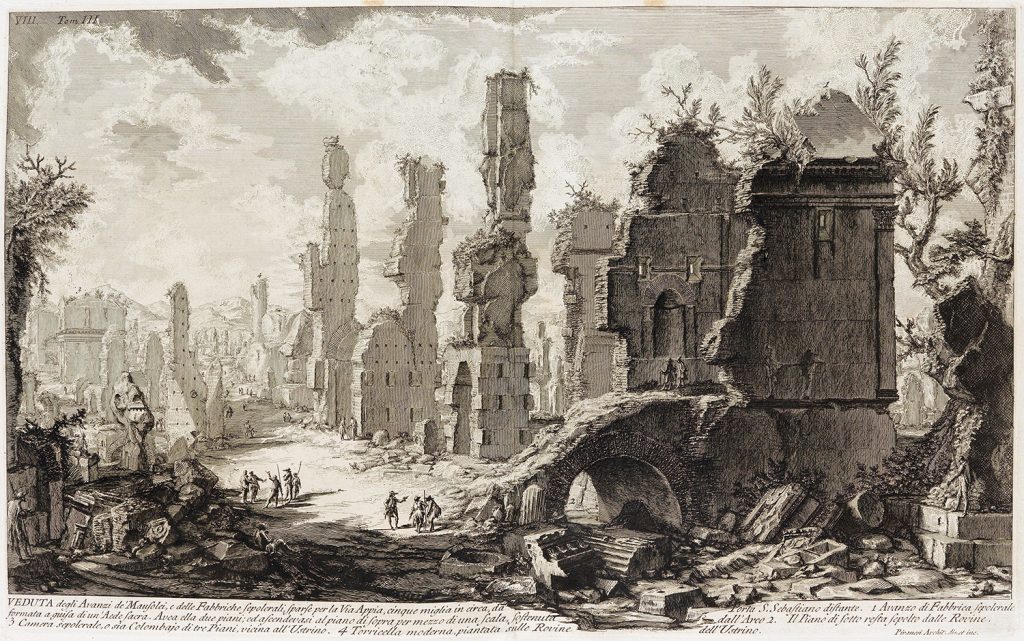

Illuminated by a dramatic sunset, the powerful physiques of the gesturing figures and rearing horses convey Piranesi’s passionate belief in the enduring legacy of the ancient civilization. The figures were also thought to represent the man-eating horses of Diomedes, or more popularly, the twin gods Castor and Pollux. In the key at the bottom of the print Piranesi identifies the group as Alexander and his horse Bucephalus, an interpretation that had been popular, but disputed, since the mid sixteenth century. The identity and origin of the marble group, believed to have been in the square since antiquity, have been debated since the Renaissance. In his etching Piranesi focuses on the marble sculptures, which, at over five and a half meters in height, tower over the people in the square.

It represents one of the most famous piazzas of Rome, situated on the Quirinal Hill and called Monte Cavallo after the enormous sculptural group of two figures with their horses that grace its centre.
#Views of rome piranesi series
View of Piazza di Monte Cavallo belongs to the earliest etchings in the series and is thought to date before 1748.

Issuing the plates individually and in groups from the late 1740s, the artist created a total of 135 prints during his long career. The desire to communicate the architectural achievements of the past, and of his contemporaries, led the artist to adopt a larger, double-folio format when he commenced his most famous series of views, the Views of Rome. Initially working on a small format, Piranesi’s delicate etchings of ancient and contemporary Roman architecture imbued their subject with a striking monumentality. The market was well established for these views ( vedute) when, in the mid 1740s, the young Venetian artist Giovanni Battista Piranesi made his first prints.
#Views of rome piranesi how to
Everyday objects, logos and scenes were given a unique twist, whether in the style of a comic strip or in the use of neon colors.Įxplore an impressive collection of figurative art prints for sale on 1stDibs and read about how to arrange your wall art.During the eighteenth century painted and engraved views of Rome were popular among visitors to the city, in particular the wealthy young Englishmen who roamed the Continent on what was known as the Grand Tour. Lithographs are a common version of planographic prints.įigurative art printmaking was especially popular during the height of the Pop art movement, and this kind of work can be seen in artist Andy Warhol’s extensive use of photographic silkscreen printing. The artist will often draw on the surface with grease crayon and then apply ink to those markings. There are also planographic prints, which use metal plates, stones or other flat surfaces as their base. The artist carves into a block and applies ink to the raised surface, which is then pressed onto paper. This includes woodcuts, which are a type of relief print with perennial popularity among collectors. Since then, figurative art has evolved significantly as it continues to represent the world, including a breadth of works on paper, including printmaking. This remnant of a remote past has long faded, but its depiction of a cattle-like creature in elegant ocher markings endures. The oldest-known work of figurative art is a figurative painting - specifically, a rock painting of an animal made over 40,000 years ago in Borneo. Bring energy and an array of welcome colors and textures into your space by decorating with figurative fine-art prints and works on paper.įigurative art stands in contrast to abstract art, which is more expressive than representational.


 0 kommentar(er)
0 kommentar(er)
